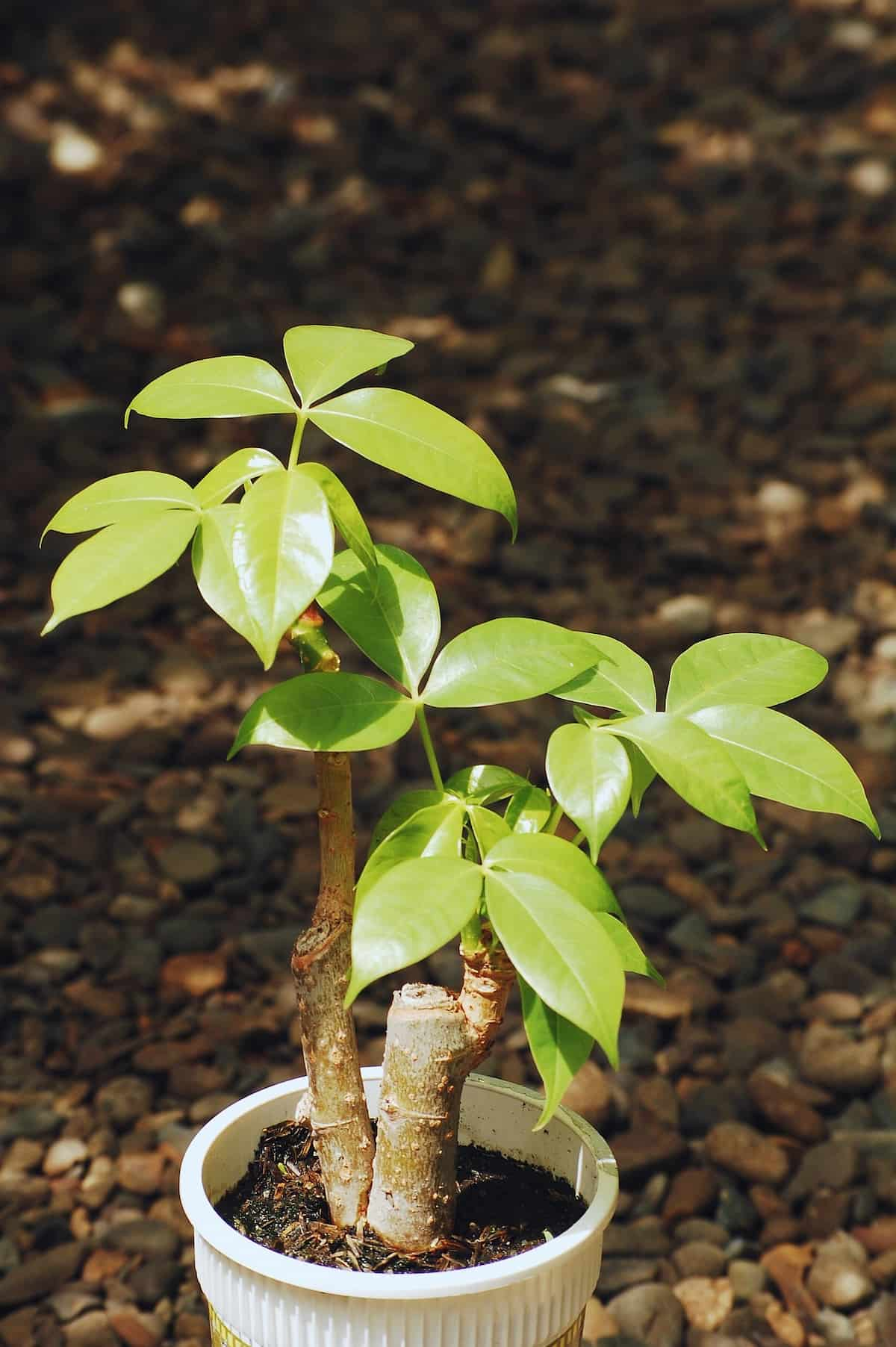The type of container you choose can make a big difference in the health and growth of your plants. Choosing a suitable container for your houseplants is essential if you want them to thrive. With some research, you can find the perfect pot for each plant, whether made of plastic, ceramic, or another material. Container gardening is the best way to add beauty to your home, even if you have small space.
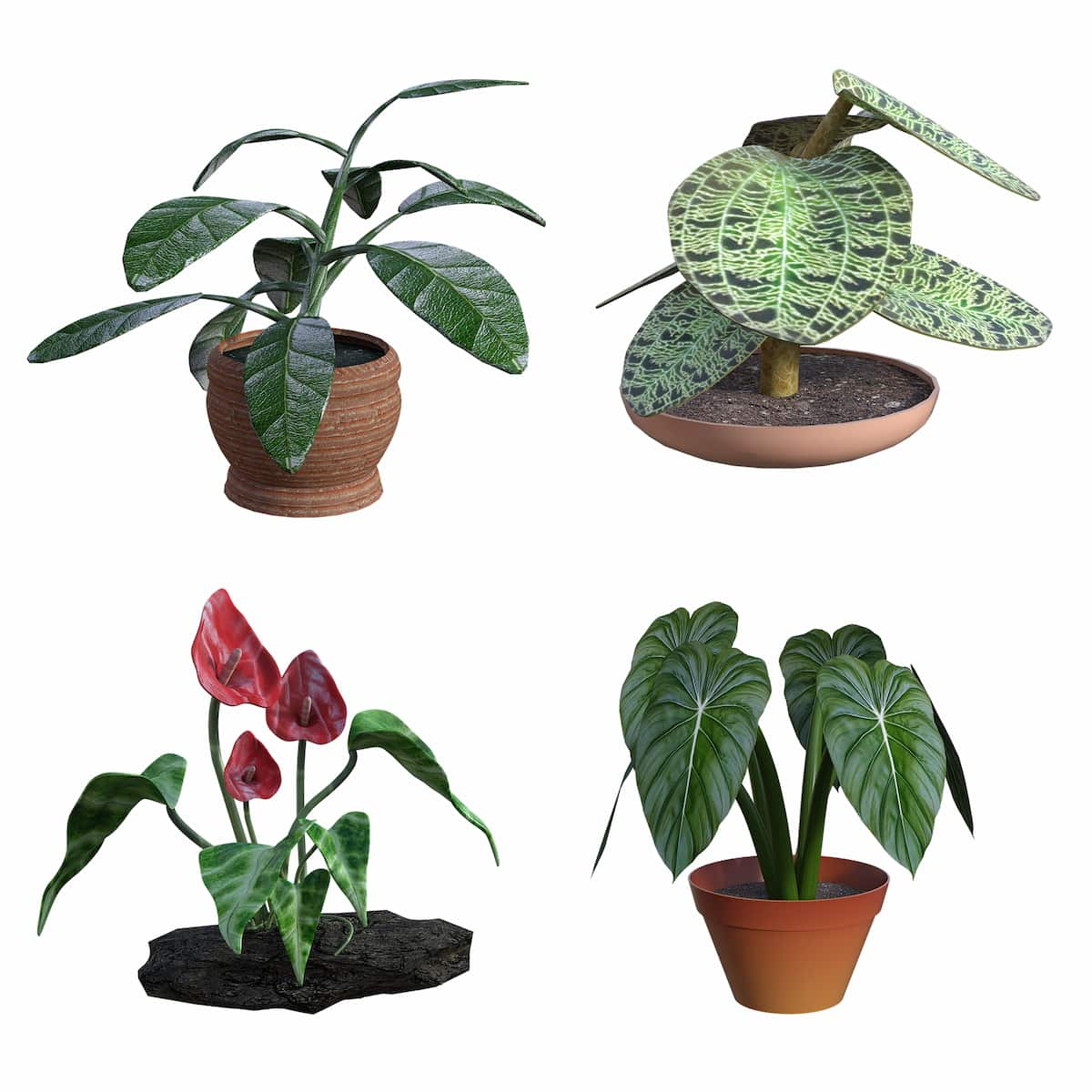
But once you’ve decided to start a container garden, you need to choose suitable containers for your plants. Not all containers are created equal. Some are better suited for certain plants than others. And some plants need special care when it comes to container choice. The important thing is to confirm that the pot has drainage holes, is the right size for your plant, and has a material that will allow your plant to thrive. With a bit of research, you’ll be able to find the perfect pot for all your plants in no time.
How to choose the suitable container for your houseplants
Choose the best material for your containers
When choosing a container for your houseplants, the options can seem endless. Each has its benefits and drawbacks, so choosing the right one for your plant is essential. Pots come in all shapes, sizes, colors, and materials. It can be overwhelming to decide which pot is best for your houseplant.
Wood
Wood containers are another popular choice because they’re attractive and durable. They can be expensive, though, and they’re not the best choice for plants that need a lot of drainages because they tend to retain water.
In case you missed it: 13 Popular Houseplants with White Flowers: You Should Add to Your Home
Terracotta
These pots are made from fired clay and are porous, so they breathe well and allow water to evaporate. They are lightweight and come in various shapes and sizes. Terra cotta pots can dry out quickly, so they are best for plants that like drier conditions.
Plastic
Plastic containers are the most popular choice for houseplants. They’re lightweight, inexpensive, and come in various colors and styles. But these pots are not always the best choice for your plants. Plastic doesn’t breathe as well as other materials, so it can hold in too much moisture and cause root rot. It’s also more likely to crack or break if you drop it.
Metal
Metal containers are the least popular choice for houseplants, but they have some definite advantages. They offer excellent drainage and breathability, so they’re ideal for plants that need lots of airflow around their roots. The downside is that metal containers can get very hot in direct sunlight, damaging your plants.
The Drainage of the Container
A well-drained pot is critical for the health of your houseplants. If water cannot drain out of the pot, it will pool at the bottom and start to rot the roots of the plant. This can lead to several problems for the plant, including yellowing leaves, wilting, and eventually death. First, look for pots that have drainage holes in the bottom. These holes allow water to seep out of the pot and into the soil, preventing it from pooling.
Second, ensure the pot you choose is made from a material that allows water to pass through easily. Materials like terracotta or glazed ceramic are ideal because they’re porous and won’t hold onto water. Considering these factors when choosing a pot for your houseplants, you can be sure they’ll have proper drainage and stay healthy for years to come.
In case you missed it: 12 Tips to Keep Your Houseplants Healthy: Ideas for Beginners
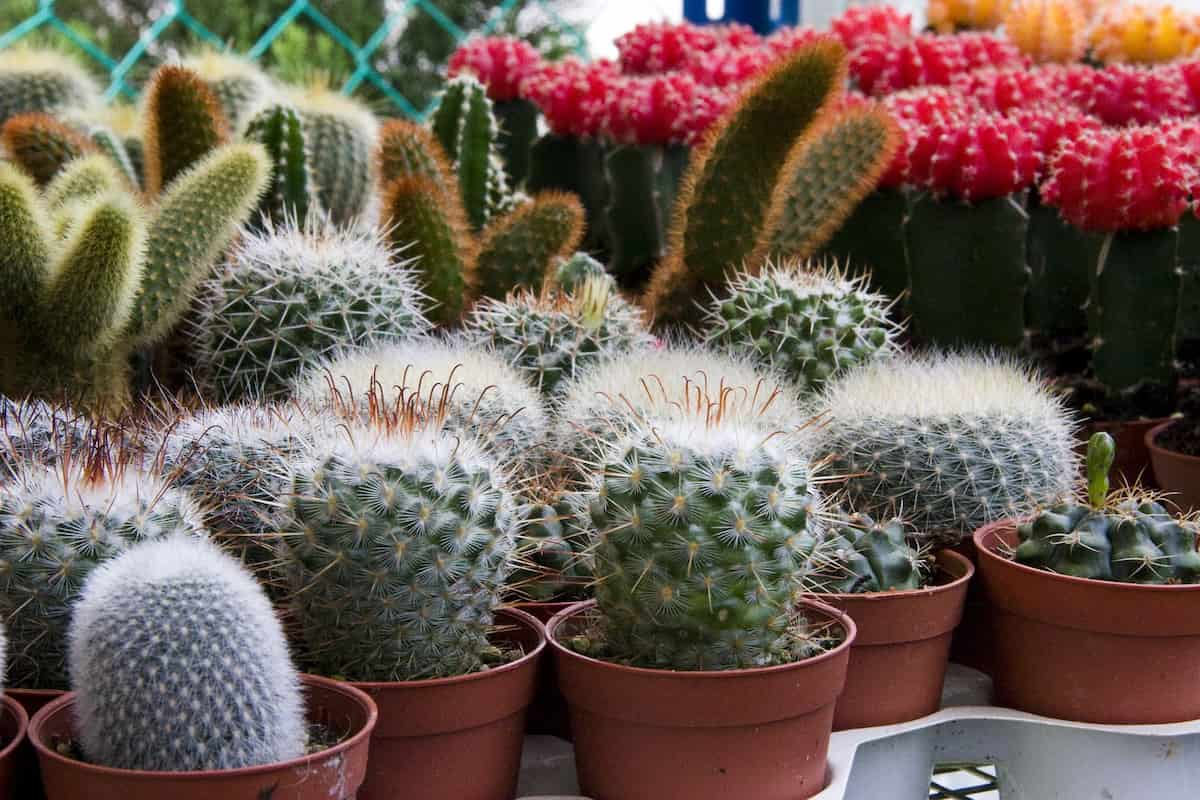
The size of the container
When it comes to the pot size for your houseplants, it is essential to consider the plant’s current size and future growth. If a pot is too small, the plant’s roots will become cramped, and it will be unable to uptake enough water and nutrients to support its growth. On the other hand, if a pot is too large, the plant may become rootbound, meaning the roots will fill up the entire pot and begin to suffocate. Therefore, you should choose a pot that is slightly big enough for the plant’s current needs with a little extra room to spare for future growth.
You should choose a pot about twice the size of the plant’s root ball. Second, think about how often you’ll need to water your plant. Finally, consider the amount of light your plant will need. If your plant needs a lot of light, you might choose a smaller pot, so it doesn’t dry out as quickly. Pick a pot about 6 inches in diameter if your plant is small. For medium-sized plants, choose a pot 8-10 inches in diameter. If you have a large plant, opt for a 12 inches or more-in-diameter pot.
Choose the container based on the location
The type of container you choose for your houseplant will depend on where you plan to put it in your home. For example, if you want to put your plant on a windowsill, you’ll need a shallow container that will fit. You’ll need a deeper container to put your plant on the floor. You also need to consider the drainage holes in the bottom of the pot—if you’re putting your plant on a carpeted surface, you’ll want a pot with drainage holes with a saucer so that water can drain out and not damage your floor.
The shape of the container
Pots for houseplants come in all shapes and sizes. The most important thing to consider when choosing a pot for your plant is the pot’s drainage. You should select a pot with drainage holes in the bottom so water can drain. If the pot does not contain drainage holes, the plant will become overwatered and may die.
Finally, consider the shape of the pot when choosing a pot for your houseplant. The shape of the pot can affect how much light and air circulate the plant. For example, tall, skinny pots will allow more light than a short, wide pots. Round pots allow good air circulation around all parts of the plant, while square pots do not allow as much air circulation.
In case you missed it: Top 10 Houseplants to Combat Condensation and Mold in Your Home

Consider the weight of the container
When choosing a pot for your houseplant, it’s essential to consider the weight of the pot. A heavy pot can be difficult to move, so choosing the right size and weight for your plant is essential. You may need a heavier pot to keep it from tipping over if you have a large plant. Conversely, a small plant will do fine in a lighter pot. It’s also important to consider the material of the pot. A ceramic or clay pot will be much heavier than a plastic or metal pot.
Problems caused by the wrong container
Many problems can be caused by using the wrong container for a particular product. The most common problem is that the wrong container can cause the product to degrade or break down prematurely. This can be a severe problem if the product is delicate or expensive, and it can also lead to waste if the product is only partially used before it deteriorates.
Using the wrong container can also lead to problems with storage and transportation. If the container is not designed for the proper size and shape of the product, it may leak or break during transport. This can damage the product and anything else it comes into contact with during transport.
Exposed roots
One of the main problems caused by using the wrong container is that your plant’s roots can become exposed. This can happen if the container is too small or if it doesn’t have enough drainage holes. When roots are exposed, they can become dried out and damaged. They may also grow outside of the container, which can cause several other problems. If using a too-small container, you must water your plant more often than usual.
If you want to use a pot without drainage holes, the water will sit at the bottom, leading to root rot problems. Root rot is caused by excess moisture and can kill your plant. If you notice that your plant’s leaves are wilting or turning yellow, it may be a sign of root rot, and you should repot your plant into a new pot with drainage holes as soon as possible.
In case you missed it: 20 Common Houseplants/Indoor Plants Problems: How to Fix Them, Solutions, and Treatment
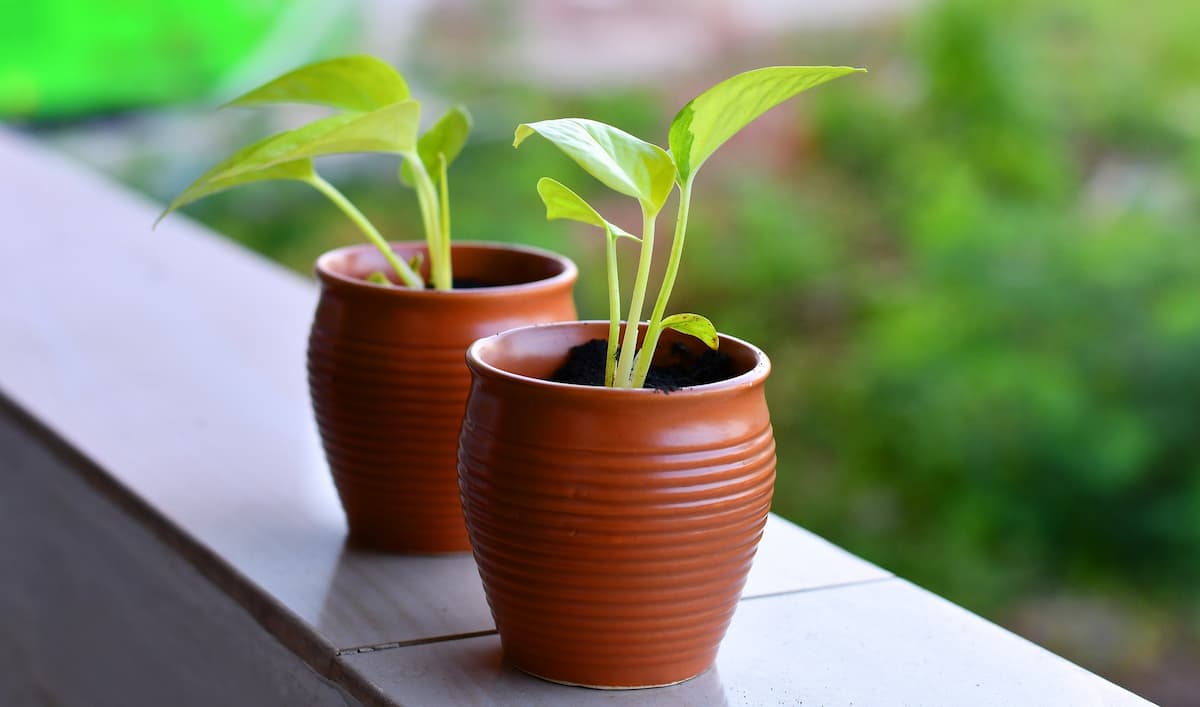
The plant is struggling
If your plant struggles, it could be due to the wrong container. The plant’s roots may not have enough room to grow, causing the plant to become stunted. The wrong container may not allow adequate drainage, leading to waterlogged soil and root rot. The container may be too small, preventing the plant from getting the nutrients it needs. The material of the container may be unsuitable for the plant, causing it to become stressed or even die. If you think your plant is suffering from these problems, try switching to a different container.
The soil dries out quickly
When the soil in your container dries out quickly, it can cause several problems for your plants. The roots of your plants will be stressed and unable to take up the water and nutrients they need. This can lead to wilting, yellowing leaves, and even death. Your plants may also suffer heat stress if the soil dries out too quickly.
This is because the roots need moisture to help keep the plant cool. The plant becomes more susceptible to heat damage if the roots are dried. To avoid these problems, make sure you choose a container that has good drainage. Also, be sure to water your plants regularly and deeply so the roots can access the moisture they need.
The soil stays wet for too long
The most common problem caused by the wrong container is that the soil stays wet for too long. This can lead to several problems, including the roots of your plants can rot. Your plants can develop fungal diseases. Your plants can become stunted or yellowed. To avoid these problems, make sure you choose a container that has good drainage.
How to care for your plants once they’re in their new pot
Assuming you’ve chosen a pot that is best for your plant, there are a few things to remember when caring for your plants once they’re in their new pot. First, make sure you water them regularly. Most plants need to be watered at least once a week and more often if they’re in a pot with drainage holes. If you’re unsure how often to water your plant, check the soil before watering to see if it’s dry.
In case you missed it: Common Reasons Why Your Houseplants are Dying
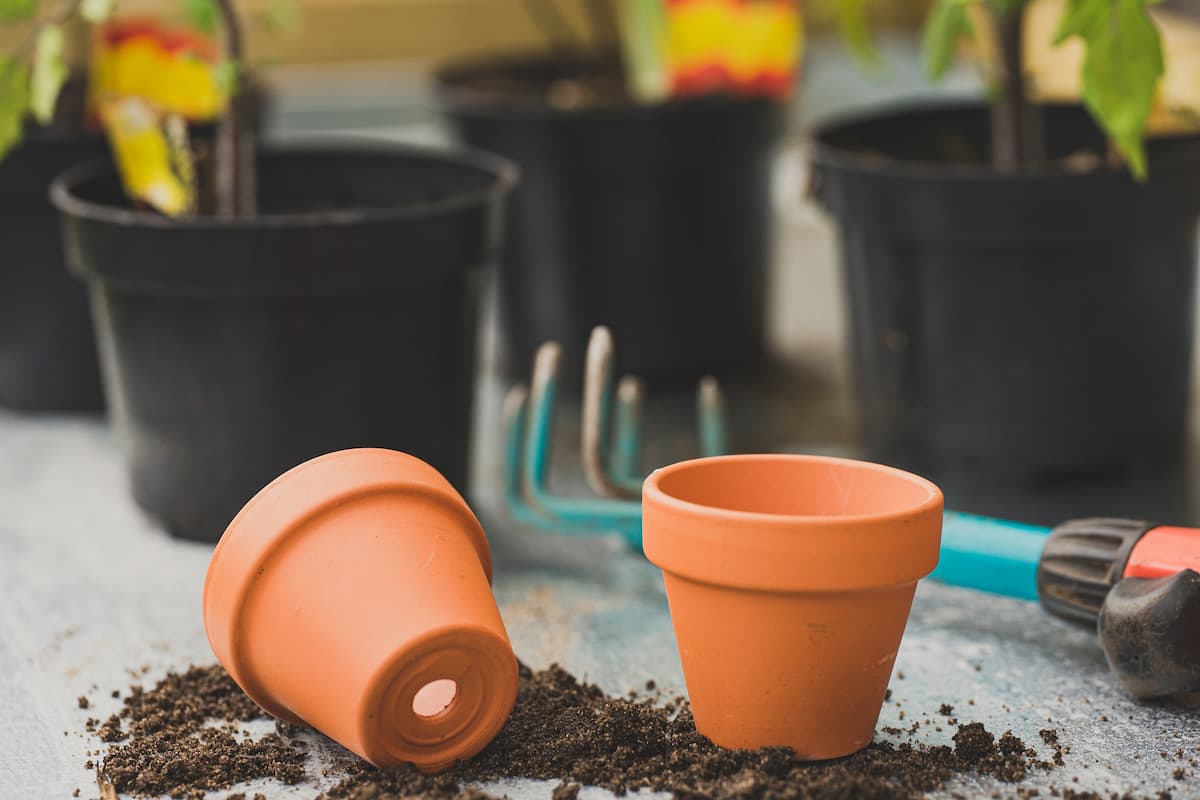
Second, give your plants some sun. Most plants need four hours of direct sunlight daily to ensure enough light. Third, fertilize your plants every few weeks. This will help them grow strong and healthy roots. You can use a liquid fertilizer or slow-release pellets. Just follow the directions on the package, so you don’t over-fertilize and damage your plants.
Finally, don’t forget to keep an eye on your plants and make sure they’re not too dry or too wet. If the leaves start to droop or turn yellow, that’s a sign that they need more water. And if the leaves start to brown or curl up, that’s a sign that they’re getting too much water.
Conclusion
There are so many containers for houseplants on the market these days. With so many choices, deciding which is suitable for your plant can be challenging. Choosing the perfect container for your houseplants is essential to their health and longevity. The wrong container can lead to drainage problems, root rot, and other issues. By considering the plant’s size, drainage needs, and light requirements, you can ensure it will thrive in its new home. With some planning, you may choose the perfect pot to help your houseplant grow and flourish.
- Seasonal Flower Gardening: Best Practices for Spring, Summer, Fall, and Winter
- How to Grow Hibiscus from Flower
- Plantation Ideas for Home Decoration: A Beginners Guide
- Flower Garden Designs and Layouts for Beginners
- Planting and Spacing Techniques in Papaya: A Beginner’s Guide
- Growing Gold: Essential Techniques for Planting Pineapples
- How to Make Kalanchoe Plant Bushy: Home Remedies and Solutions
- 11 Reasons Why Your Gardenia is Not Blooming: Home Remedies and Solutions
- Eco Elegance: The Guide to Designing a Drought-Tolerant Landscape
- Gardening on a Slope: Strategies for Hillside Landscaping
- Nourish and Flourish: Top Organic Mulches for Thriving House Plants
- Everything You Want to Know about Indian Mogra Flower: Discover Uses and Growing
- Green Thumb Success: Expert Tips for Cultivating Greenhouse Pumpkins All Year Round
- Maximize Growth & Flavor: The Ultimate Guide to Companion Planting in Herb Gardens
- How to Control Rhododendron Problems Naturally: Home Remedies and Organic Ways to Fix Them
- Natural Magic: The Remarkable Benefits of Cinnamon for Plants
- Best Steps to Revive Dying Tulip with Natural and Organic Treatment
- 10 Reasons Why Your Angel Trumpet is Not Blooming: Remedies and Treatment
- How to Fix Periwinkle Leaf and Flower-Related Problems: Natural Remedies and Solutions
- How to Fix Zinnias Leaf and Flower Problems: Discover Natural and Home Remedies
- Organic Steps to Induce Lemon Tree Flowers: A Comprehensive Guide
- Bloom Booster: Crafting the Perfect Homemade Bougainvillea Fertilizer
- Optimizing Growth: A Guide to Applying NPK Fertilizer for Potted Plants
- 10 Best Homemade Fertilizers for Rubber Plant: DIY Recipes and Application Method
- How to Boost Female Pumpkin Flowers: Effective Steps for More Flowers and High Yields
- Transform Your Indoor Garden: Top Benefits of Pink Salt for Houseplants
- 10 Best Homemade Fertilizers for Peacock Plants (Calathea): Easy DIY Guide
- Unlock Blooms: 9 Reasons Why Your Potted Chrysanthemum is Not Blooming
- 8 Reasons Why Your Potted Hibiscus is Not Blooming: Fix it with Simple Solutions
- Unlock Blooms: 9 Key Reasons Your Potted Frangipani Won’t Flower
- 10 Reasons Why Is My Ice Plant Not Blooming: Remedies and Treatment
- 10 Reasons Why My Potted Hydrangea Not Blooming: Treatment and Remedies
- 10 Reasons Why is My Wisteria Not Blooming: Remedies and Treatment
- 10 Reasons Why is My Goldfish Plant Not Blooming: Remedies and Treatment
- Maximize Your Space: Ultimate Guide to Balcony Gardening with Grow Bags
- 10 Reasons Why Your Iris is Not Blooming: Remedies and Treatment
